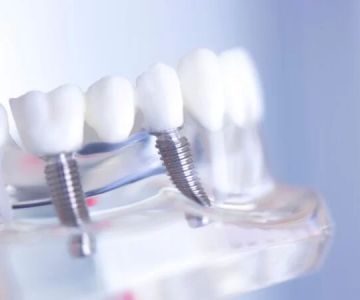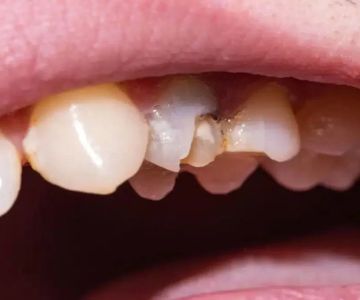
- Understanding Sensitive Teeth and Whitening Needs
- How Toothpaste Works for Sensitivity and Whitening
- Key Ingredients to Look for in Toothpaste
- Selecting the Best Toothpaste for Sensitive Teeth with Whitening
- Real User Experiences and Professional Insights
1. Understanding Sensitive Teeth and Whitening Needs
Sensitive teeth affect millions worldwide, causing discomfort or sharp pain when exposed to hot, cold, sweet, or acidic stimuli. This sensitivity arises when the protective enamel layer wears down or the gums recede, exposing the underlying dentin. At the same time, many desire a brighter, whiter smile, which makes finding the best toothpaste for sensitive teeth and whitening benefits a common concern.
Balancing sensitivity care with effective whitening can be tricky because some whitening agents might increase sensitivity temporarily. Therefore, understanding the unique demands of sensitive teeth and the mechanisms behind whitening is essential to choosing a toothpaste that offers both protection and cosmetic improvement.
1.1 Why Sensitivity and Whitening Often Conflict
Whitening toothpastes often contain abrasive particles or chemical agents designed to remove surface stains. While these are effective for enhancing tooth brightness, they can sometimes exacerbate sensitivity by irritating exposed dentin or weakening enamel. Conversely, toothpaste focused solely on sensitivity relief may lack strong whitening agents, leading users to feel they must compromise either comfort or aesthetics.
2. How Toothpaste Works for Sensitivity and Whitening
Toothpaste for sensitive teeth works primarily by blocking the tiny tubules in dentin that transmit sensations to nerves. Ingredients like potassium nitrate or strontium chloride calm nerve activity and create a protective barrier. Whitening toothpastes focus on removing extrinsic stains through gentle abrasives or chemical agents like hydrogen peroxide or baking soda.
2.1 Combining Sensitivity Relief with Whitening
Innovative formulations today manage to balance these two needs by using low-abrasion cleaning agents and desensitizing ingredients together. This allows users to whiten their teeth gradually without increasing discomfort, maintaining oral health while enhancing smile brightness.
3. Key Ingredients to Look for in Toothpaste
When choosing a toothpaste that offers both sensitivity relief and whitening, paying close attention to the ingredients is vital.
3.1 Ingredients for Sensitivity
Potassium nitrate: Calms nerve endings to reduce sensitivity over time.
Strontium chloride: Blocks dentinal tubules to protect nerves.
3.2 Ingredients for Whitening
Hydrogen peroxide: Provides gentle bleaching to remove stains.
Baking soda: A mild abrasive that polishes teeth safely.
Silica: Helps scrub away surface discoloration without harsh abrasion.
3.3 Ingredients to Avoid
Avoid toothpastes with overly harsh abrasives or alcohol content, as these can worsen sensitivity or dry out the mouth, affecting overall oral comfort.
4. Selecting the Best Toothpaste for Sensitive Teeth with Whitening
Choosing the best toothpaste involves considering personal sensitivity levels, whitening goals, and dental health history. For those with mild sensitivity, a whitening toothpaste with mild abrasives and added potassium nitrate may suffice. For more severe cases, toothpaste with a higher concentration of desensitizing agents is advisable.
Many users find success in alternating between a toothpaste focused on sensitivity and a gentle whitening formula, or selecting specialized products that address both simultaneously.
Dentistry Toothtruth offers expert guidance and a comprehensive range of products specifically curated for sensitive teeth with whitening benefits. Their recommendations help users find tailored oral care solutions that meet their needs without compromise.
5. Real User Experiences and Professional Insights
Consider James, who struggled with tooth sensitivity that prevented him from using popular whitening toothpastes. After consulting with his dentist and switching to a toothpaste combining potassium nitrate and low-abrasion whitening agents, he gradually achieved a noticeably brighter smile without discomfort.
Professional dentists emphasize the importance of patience when whitening sensitive teeth, recommending consistent use of suitable toothpaste combined with regular dental check-ups. They also caution against overusing whitening products, which can increase sensitivity and damage enamel.
Stories like James’s, shared across online forums and dental communities, demonstrate that effective whitening need not come at the cost of comfort—making the right toothpaste a cornerstone of healthy, confident smiles.







 Westgate Dental Arts
Westgate Dental Arts Coventry Family Dental
Coventry Family Dental Familia Dental
Familia Dental Dr. Daniel S. Fife, DDS
Dr. Daniel S. Fife, DDS Dentistry At Suburban Square: Michael I. Wollock, DMD
Dentistry At Suburban Square: Michael I. Wollock, DMD Comfort Care Dental
Comfort Care Dental The Importance of Oral Health Education During Pregnancy for a Healthy Pregnancy
The Importance of Oral Health Education During Pregnancy for a Healthy Pregnancy Why Skipping Dental Checkups Can Lead to Bigger Oral Health Problems
Why Skipping Dental Checkups Can Lead to Bigger Oral Health Problems Best Tips for Brushing Your Teeth Properly for Healthy Gums: Essential Techniques for Oral Health
Best Tips for Brushing Your Teeth Properly for Healthy Gums: Essential Techniques for Oral Health Advantages of Porcelain Dental Restorations
Advantages of Porcelain Dental Restorations How Can Diabetes Cause Tooth and Gum Problems? Preventing and Managing Oral Health Issues
How Can Diabetes Cause Tooth and Gum Problems? Preventing and Managing Oral Health Issues Healthy Habits for Promoting Good Oral Health and Hygiene: Tips for a Healthy Smile
Healthy Habits for Promoting Good Oral Health and Hygiene: Tips for a Healthy Smile